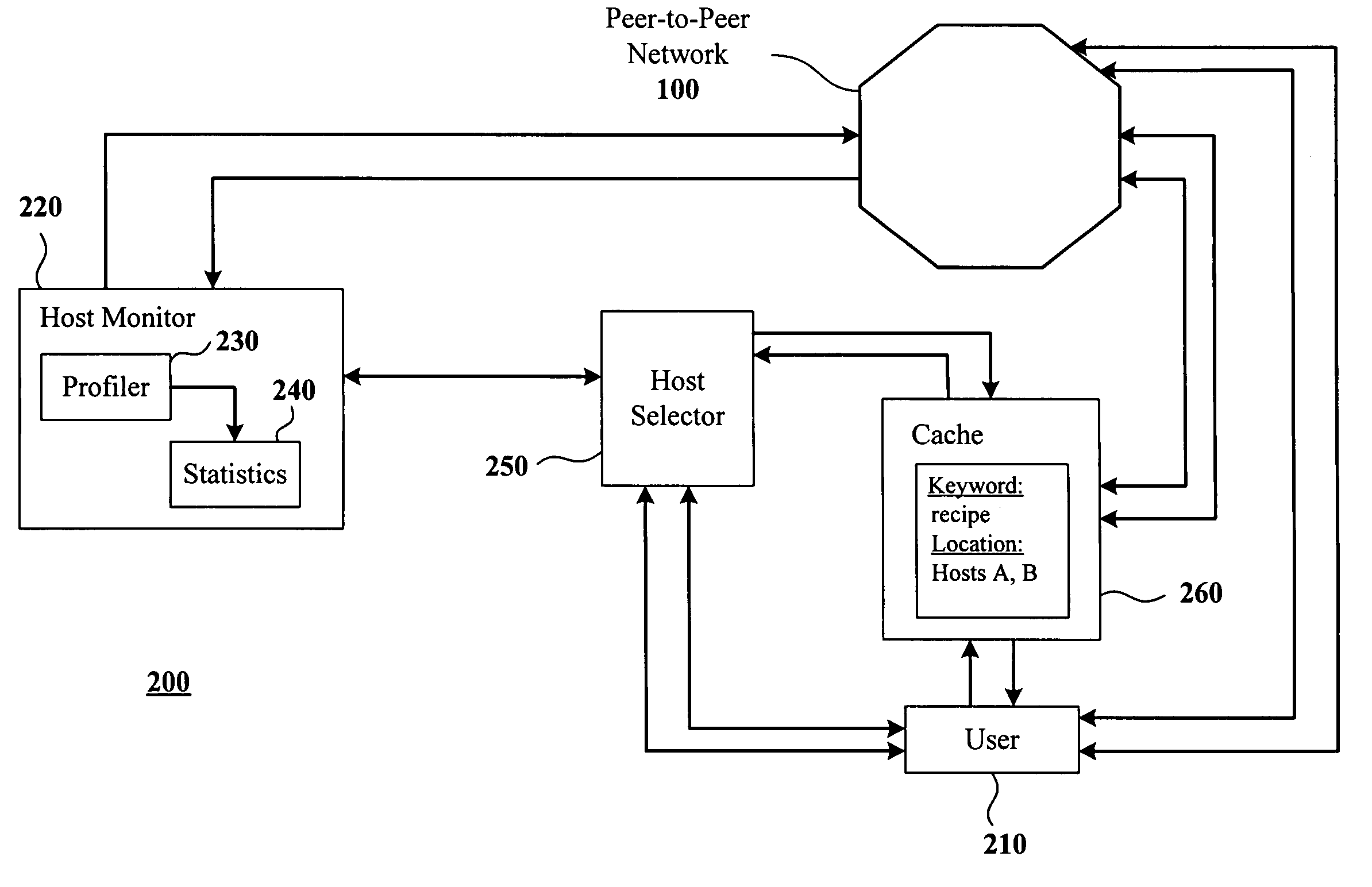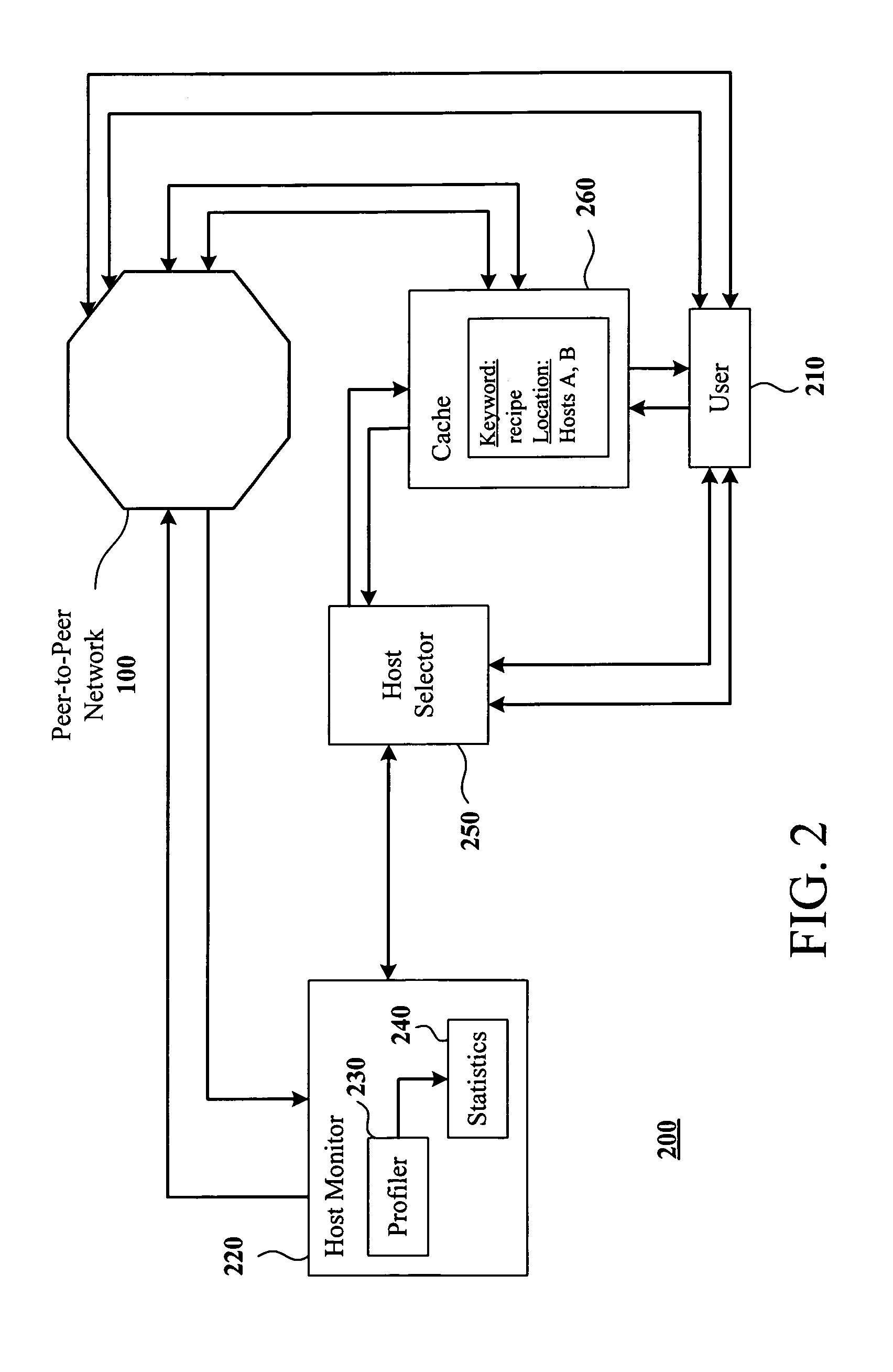System and method for searching peer-to-peer computer networks by selecting a computer based on at least a number of files shared by the computer
a peer-to-peer computer and file system technology, applied in the field of system and method for searching peer-to-peer computer networks, can solve problems such as single point of failure, inability to users becoming overly reliant on services which do not provide reliable, effective services, etc., to achieve stable network environment, increase the chances of fast results, and improve the effect of search results
- Summary
- Abstract
- Description
- Claims
- Application Information
AI Technical Summary
Benefits of technology
Problems solved by technology
Method used
Image
Examples
Embodiment Construction
[0031]The present invention is directed to a system and method for effectively searching a peer-to-peer network in a stable network environment. While the present invention is described below with respect to various explanatory embodiments, various features of the present invention may be extended to other applications as would be apparent.
[0032]FIG. 2 illustrates a system overview 200 of one embodiment of the present invention. Although the various system components appear to be external to network 100, it is important to note that this is for the sake of illustration only. That is, all of the system components may be connected to and within network 100, and may therefore send, transmit or respond to queries from any other host within the network. In particular, user 210 should be thought of as just as an example of any (potential) host within the network 100.
[0033]In FIG. 2, peer-to-peer network 100 may be a known decentralized peer-to-peer network. User 210 can access network 100...
PUM
 Login to View More
Login to View More Abstract
Description
Claims
Application Information
 Login to View More
Login to View More - R&D
- Intellectual Property
- Life Sciences
- Materials
- Tech Scout
- Unparalleled Data Quality
- Higher Quality Content
- 60% Fewer Hallucinations
Browse by: Latest US Patents, China's latest patents, Technical Efficacy Thesaurus, Application Domain, Technology Topic, Popular Technical Reports.
© 2025 PatSnap. All rights reserved.Legal|Privacy policy|Modern Slavery Act Transparency Statement|Sitemap|About US| Contact US: help@patsnap.com



